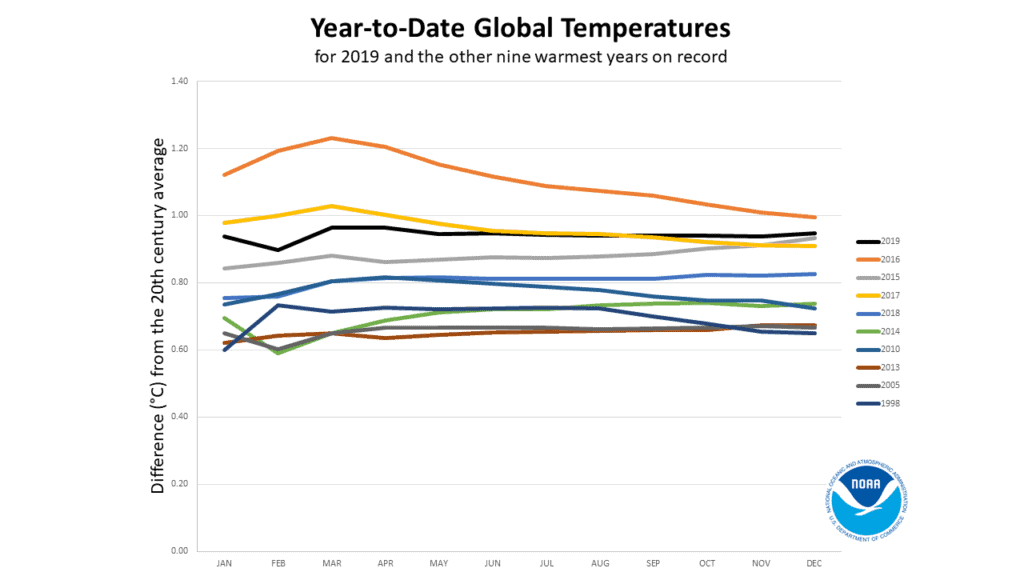Independent analyses from NASA and the National Oceanic and Atmospheric Administration (NOAA) found that 2019 was the second warmest year on record since 1880.

Image credits Global Climate Report – Annual 2019 / NOAA.
Global surface temperatures in 2019 were the second warmest in modern records (the keeping of which began in 1880). This makes the past five years the warmest in the last 140 years, the agencies explain, with the highest temperatures recorded in 2016.
Hot trend
“The decade that just ended is clearly the warmest decade on record,” said Goddard Institute for Space Studies Director Gavin Schmidt. “Every decade since the 1960s clearly has been warmer than the one before.”
Compared to the average temperature between 1951 and 1980, the past year was 1.8°F (1°C) warmer overall, and 2°F warmer than the average temperature in between 1880 and 1900, NASA and NOAA found. Measurement practices change over time, as do the locations of weather stations, so there are some uncertainties in the dataset. However, researchers at NASA estimate that the mean temperature for 2019 is accurate within 0.1 degrees Fahrenheit, with a 95% certainty level.
The team at NASA used surface temperature measurements from more than 20,000 measurement points on the sea, and from Antarctic research stations. The dataset was processed through an algorithm that accounted for location and urban heat island effect to produce yearly temperatures, which were then compared to the baseline period of 1951 to 1980. In broad lines, the NOAA team used the same raw data but processed it differently in the polar areas and data-poor regions, focusing specifically on the year 2019.
Climate modeling, based on the temperatures on record, points to increased human emissions of CO2 and other greenhouse gases in the atmosphere driving this warming trend.
“We crossed over into more than 2 degrees Fahrenheit warming territory in 2015 and we are unlikely to go back,” Schmidt said.
“This shows that what’s happening is persistent, not a fluke due to some weather phenomenon: we know that the long-term trends are being driven by the increasing levels of greenhouse gases in the atmosphere.”
Still, while 2019 was the second hottest year globally, weather dynamics have a strong influence on regional temperatures. NOAA found that for the contiguous 48 United States, 2019 was just “warmer than average,” is the 34th warmest year on record.
In contrast, mean temperatures in the Arctic have been rising three times faster than anywhere else in the world since 1970. Together with a warming ocean, atmospheric temperatures are driving ice loss in Greenland and Antarctica, and an increase in extreme events such as heatwaves, wildfires, and intense precipitation.


